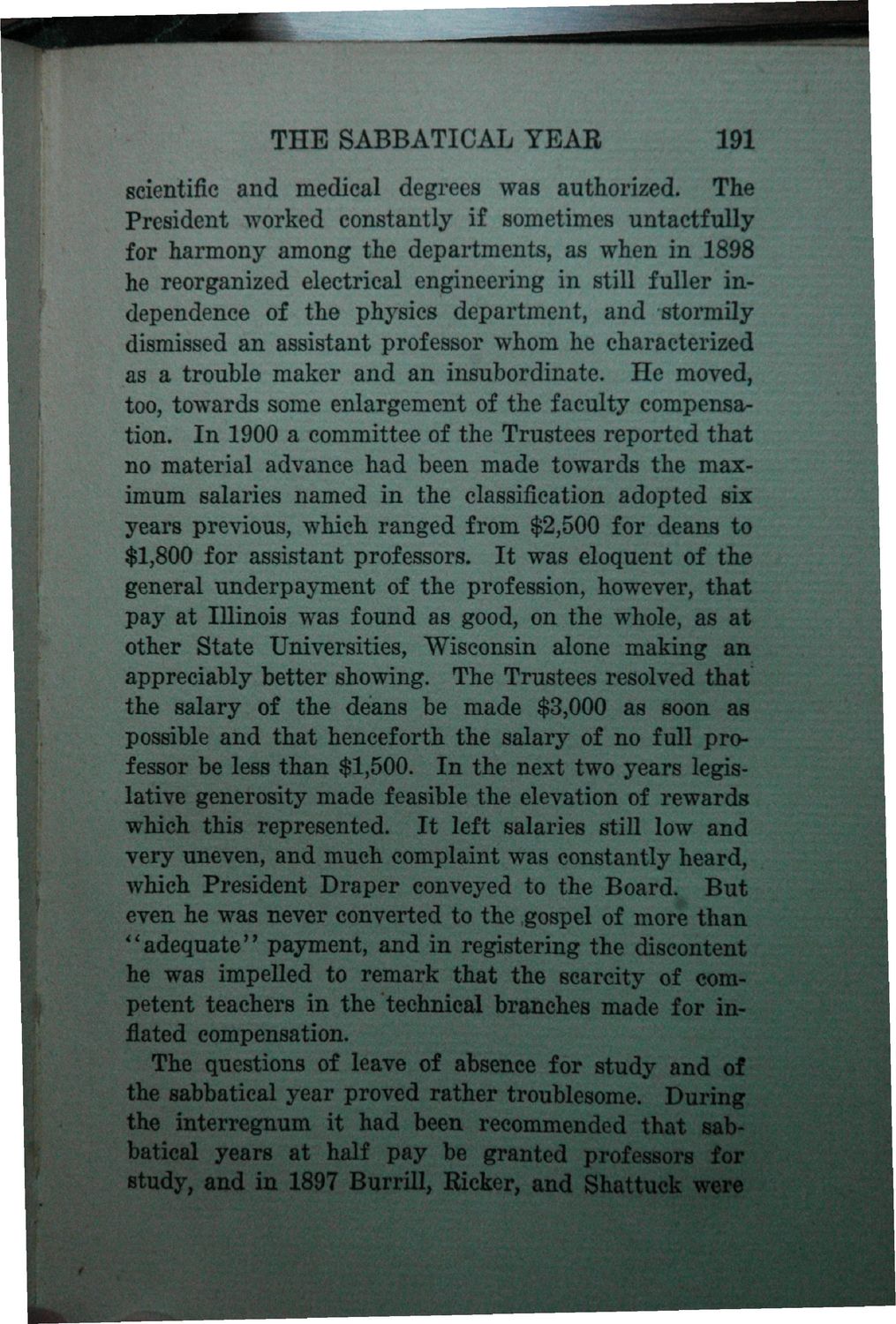| |
| |
Caption: Book - History of the University (Nevins)
This is a reduced-resolution page image for fast online browsing.

EXTRACTED TEXT FROM PAGE:
THE SABBATICAL YEAB 191 scientific and medical degrees was authorized. The President worked constantly if sometimes untactfully for harmony among the departments, as when in 1898 he reorganized electrical engineering in still fuller independence of the physics department, and stormily dismissed an assistant professor whom he characterized as a trouble maker and an insubordinate. He moved, too, towards some enlargement of the faculty compensation. In 1900 a committee of the Trustees reported that no material advance had been made towards the maximum salaries named in the classification adopted six years previous, which ranged from $2,500 for deans to $1,800 for assistant professors. It was eloquent of the general underpayment of the profession, however, that pay at Illinois was found as good, on the whole, as at other State Universities, "Wisconsin alone making an appreciably better showing. The Trustees resolved that the salary of the deans be made $3,000 as soon as possible and that henceforth the salary of no full professor be less than $1,500.4' In the next two years legislative generosity made feasible the elevation of rewards which this represented. It left salaries still low and very uneven, and much complaint was constantly heard, which President Draper conveyed to the Board. But even he was never converted to the gospel of more than "adequate" payment, and in registering the discontent he was impelled to remark that the scarcity of competent teachers in the technical branches made for inflated compensation. The questions of leave of absence for study and of the sabbatical year proved rather troublesome. During the interregnum it had been recommended that sabbatical years at half pay be granted professors for study, and in 1897 Burrill, Ricker, and Shattuck were
| |